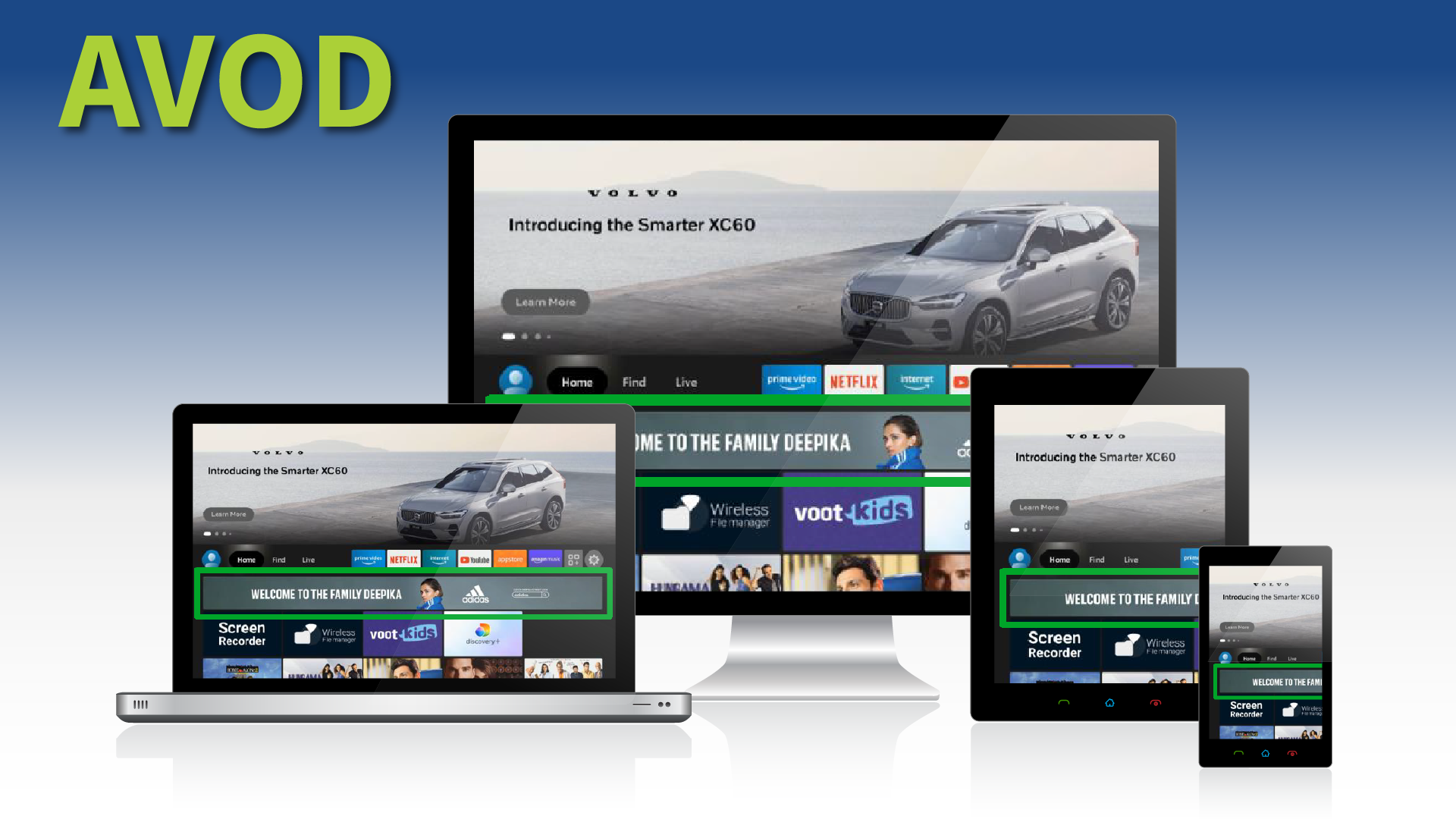
As more OTT providers embrace Advertising-based Video on Demand (AVOD) business model, device detection has become a key tool in any video platform’s arsenal. Device detection helps create an optimal viewing experience by providing detailed information about specific devices so that advertisers can target their ads in a much more efficient way.
AVOD: Advertising-based Video On Demand and Device Detection
Device detection is an important aspect of managing a video platform. It helps ensure that users are able to view content on their device of choice, and it can also help identify issues with playback or streaming. For advertising-based video on demand (AVOD) streaming platforms, device detection can also be used to target ads to specific devices or user groups. In this blog post, we’ll explore how device detection works and how it can be used to improve the advertising ROI on AVOD platforms.
What is AVOD?
AVOD, or advertisement-based video on demand services, offers viewers an alternative to SVOD (subscription-based video on demand) services. AVOD is an advertising-based video on demand service that allows users to watch videos without necessarily paying a subscription fee You can stream videos on AVOD without having to pay a subscription or rental fee; instead, the service is supported through ads you’ll see before and in between individual video streaming content. AVOD services have seen massive growth in recent years as users look for free (or cheaper) ways to watch their favorite video content.
How Quickly are Video Platforms with AVOD Growing?
Linear TV is dying but video platforms with AVOD are growing rapidly. With its mostly short-form video, YouTube is prime example of an AVOD platform, with over 2.5 billion active users seeing ads. According to recent data from Comscore, subscription video on demand (SVOD) viewing grew by 21% in 2022 while ad-supported video on-demand (AVOD) grew by 29%. Major video players in the industry are taking note and waking up to the benefits of AVOD.
AVOD growth is largely driven by the shift of consumers away from traditional cable or linear TV in favor of subscription and other VOD content delivery pricing models. AVOD platforms generate high viewership. 80% of users claim they don’t mind watching ads in exchange for free video content. Furthermore, increases in streaming internet connection speeds over broadband networks has made internet content more available to viewers, fueling faster growth in AVOD services. The spread of streaming platforms offering free or low cost subscriptions have also contributed to an acceleration of streaming services utilizing AVOD models.
The largest video players are starting to see the wisdom of mixing AVOD, SVOD, and even transactional video on demand (TVOD) where you pay for a one-time view or rental. For example, Disney launched its ad-supported Disney+ on December 8, 2022.
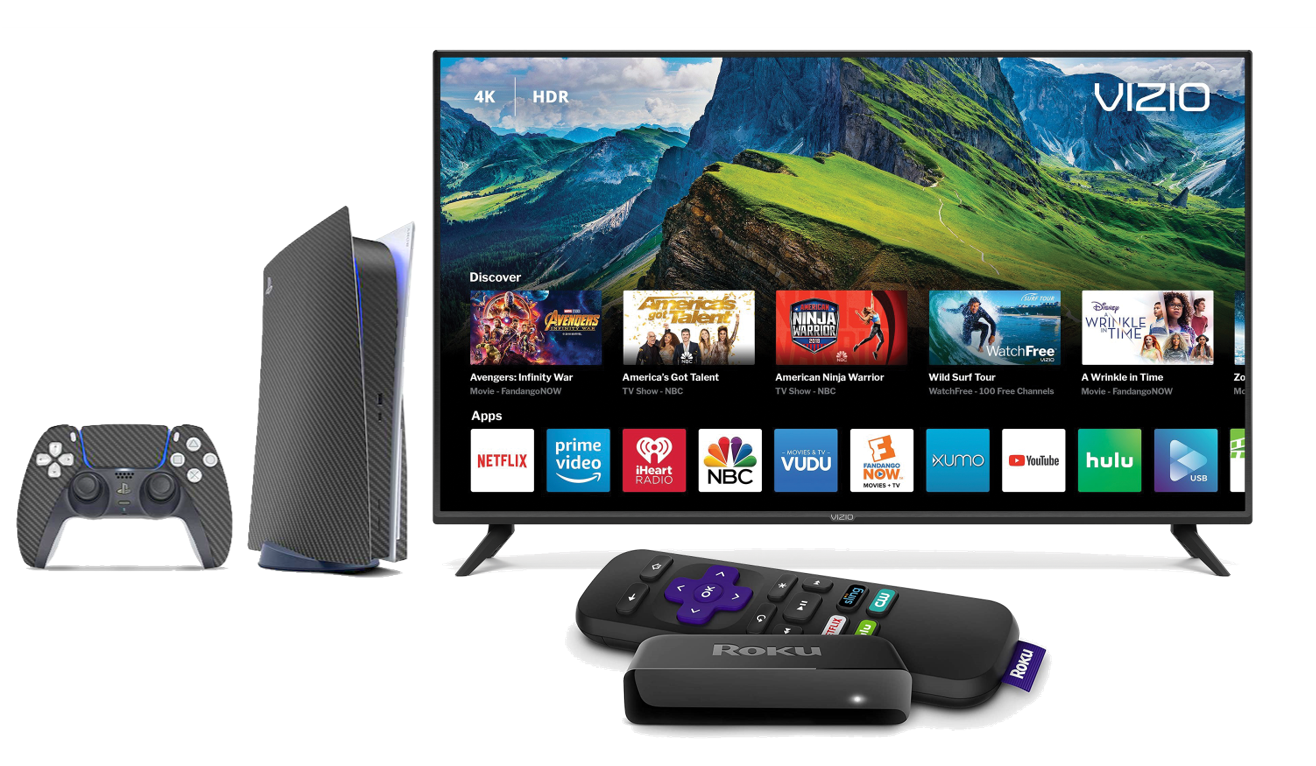
Device Detection Solutions Identify the Type of Device Accessing a AVOD Website or Application
Device detection has become increasingly important in today’s mobile-first world. From smartphones to tablets to Smart TVs and beyond, a multitude of device types access OTT and streaming video services. It is critical to know more than just the device type, but actually drill into specific device capabilities beyond just the device model and operating system.
ScientiaMobile’s WURFL, the leading industry provider of device detection, offers solutions to identify devices based on many parameters including operating system, form factor, HTML support and more. WURFL also provides the powerful information enterprises need to comprehend the impact users’ device settings have on their experiences — from web page rendering to feature availability. With WURFL device detection solutions, it’s possible for AVOD platforms and their advertisers to tailor their offerings and ads for specific types of devices in order to ensure their users have high quality experiences regardless of the device they’re using.
AVOD can be used to target ads to specific devices, such as smart TVs, OTT devices like Roku or Amazon Firestick, gaming consoles, smartphones, and tablets
Advertising via an AVOD model is an innovative way to target consumers no matter their device of choice. Whether people are gaming on a console, streaming through a smart TV, browsing the web on a tablet or smartphone, or operating an OTT video streaming Device like Roku or Amazon Fire, this form of advertisement provides a great opportunity for businesses to reach users with customized content. Each device category offers opportunities for advertisers to tap into different interests and preferences through specialized messaging and targeted ads, so it’s worth considering how your brand can make the most of each device’s unique form factor.
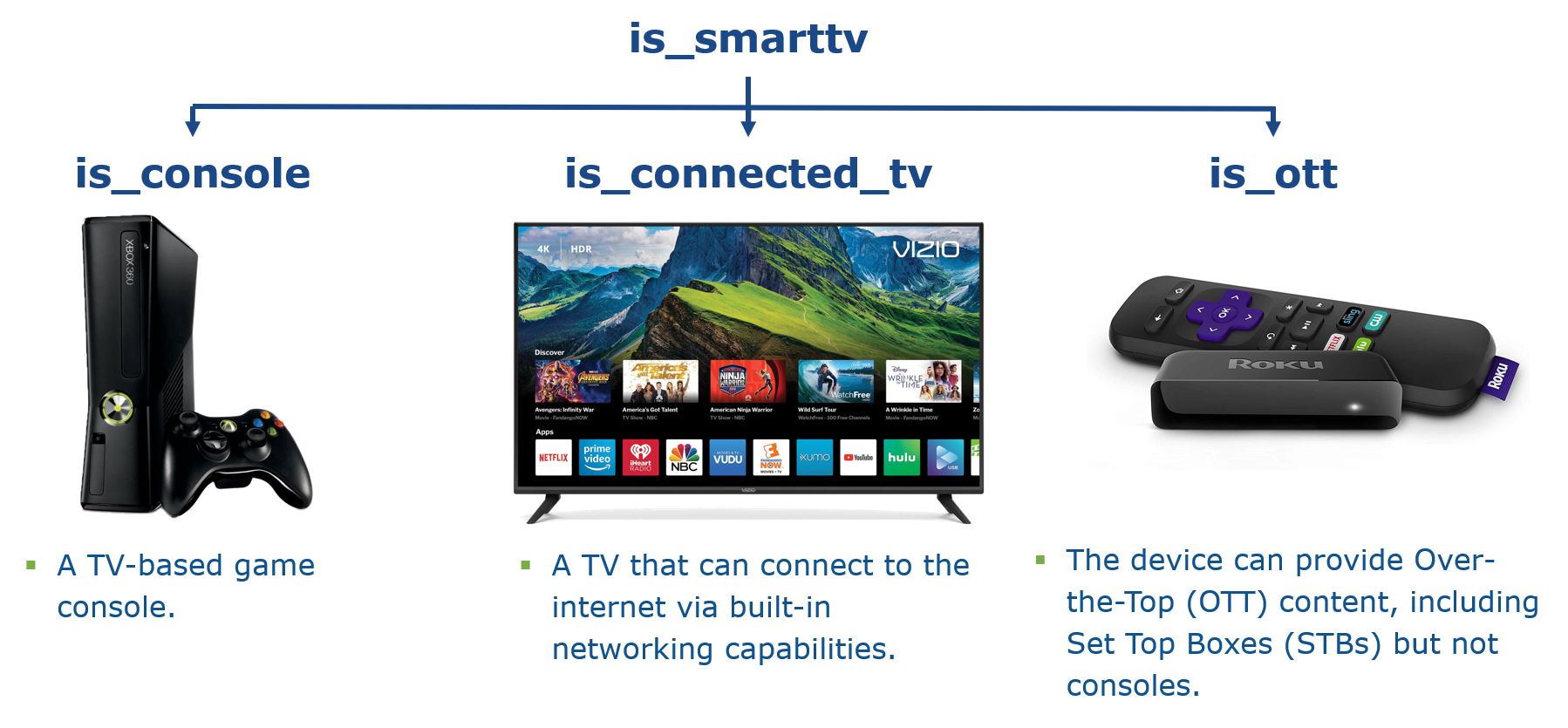
How Does Programmatic Advertising Work with AVOD?
Advertisers can bid on ad inventory generated by video platforms. Video platforms can enhance the value of their ad inventory by supplying device information with the bid request. Conversely, advertisers can more effectively target their ads to device categories or models.
Advertisers can bid on video content for Ad insertion, making use of the IAB specification for their ad requests. The bid request includes device information, which helps video platforms to increase the value of their ad inventory by facilitating better targeting for advertisers. Advertisers in turn become more efficient in focusing their ads to the right category or type of device. This efficiency can translate into higher returns for their campaigns.
Given the growth of video streaming and device diversity, AVOD and programmatic video advertising are likely to become more important in the years to come. Digital-savy audiences respond more positively when the Advertiser’s value proposition and message is tailored to their profile and interest. And an audience member’s device or smartphone can tell you a lot about a users’ preferences. For example, a recent-model iPhone smartphone user who paid over $1,000 for their phone is very different from a budget Android user whose smartphone 4 years old.
Increased access, better targeting, and improved ROI all make it a valuable prospect for businesses looking to reach consumers on different devices. So if you’re thinking of diving into this space, programmatic advertising, allowing AdTech vendors and marketers alike to maximize their ad spend while reaching goals more effectively.
What Device Parameters or Capabilities are Available for Audience Targeting on AVOD?
When it comes to targeting specific audience segments with Ad-Based Video, device parameters and capabilities offer a range of options to help you reach the right people. Device type is a key factor as you can choose whether to target connected TV, mobile device, or something else entirely. On top of that, you can also select by device model name and operating system like iOS or Android. Then there’s display resolution – finer tuning allows you to target device owners based on their device’s technical capabilities. In this way, device parameters and capabilities offer great flexibility when approaching target audiences with AVOD.
WURFL device detection offers more than 500 device device capabilities to video platforms, ad publishers, supply-side providers, demand side provides and ad serving platforms. You can find the device capabilities necessary for IAB ad standard interchanges plus enchanced information here.
Advertising Video Analytics With Device Detection Provides Valuable Feedback
Today, premium video platforms using the AVOD business model need to provide strong analytics back to their advertisers and all entities along the ad bid request chain. Typically, these can analytics include active user profile of geophaphic location, demographics, income, and other preferences. The fact that device information is not a private, first-party data
The best example of an Ad-Based Video platform is YouTube, the video behemoth with over 2.5 billion active users. Although signing up on the platform is free, accessing content means you have to watch ads before or during your chosen videos.
Video analytics can be enhanced with device detection. For example, breaking down ad impressions by form factor (connected TV, OTT device, laptop, mobile phone, tablet, set top box). In fact, WURFL can provide compelling information that links to not just the device model, but its price and release date. With price and age of device, you can infer an active user’s willingness to buy high price items and whether they are early adopters.
Many demand-side providers who bid on ad requests provide these analytics back to advertisers. Likewsie, they have dialog windows that enable advertisers apply their advertising strategies by selecting audiences based on these device profiles.
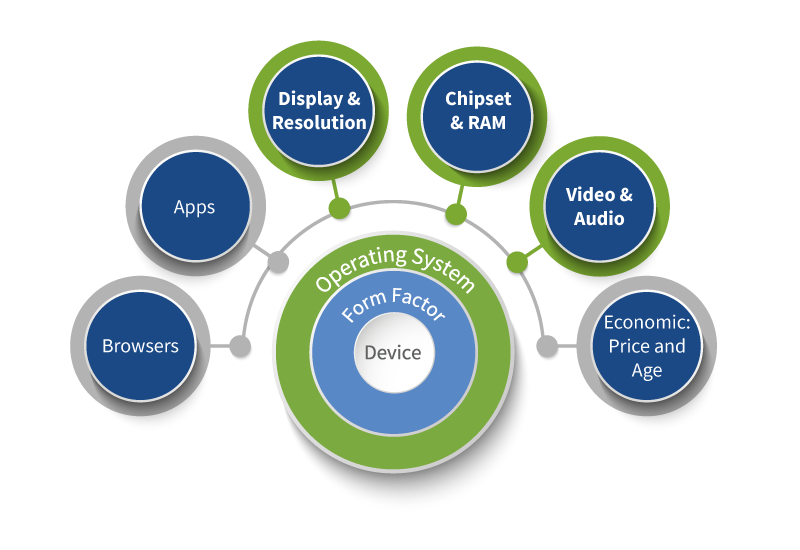
Emerging AVOD Ad Formats
With a video ad-based model, most people think of supply-side ad insertion of video ad rolls. While video insertion is hugely important, Video-on-demand platforms are coming up new formats.
Various ad formats can behave differently on different devices. For example, ad placements can appear on the home screen (or other tabs) above the fold. Or, it can lead to full-screen experience with an auto-play video.
Alternatively, a display banner can also be used.
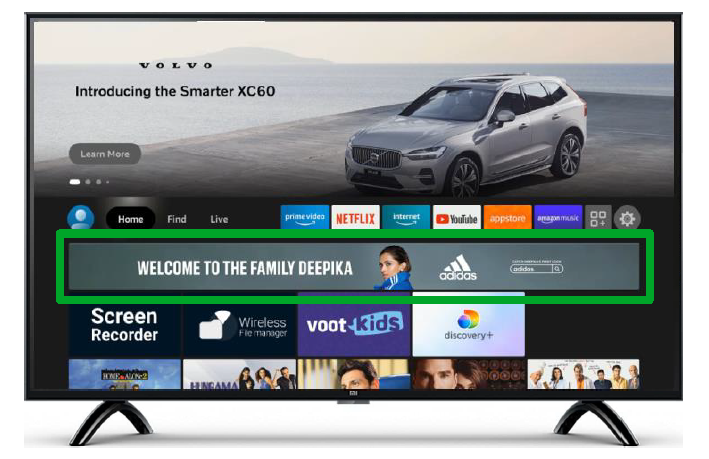
For companies with interest in technographic indicators, they would pay a premium to make sure they reach the right audience.
For example, the smartphone brand OnePlus may target people using smartphones with a particular profile, e.g. iPhone users or premium Samsung devices.
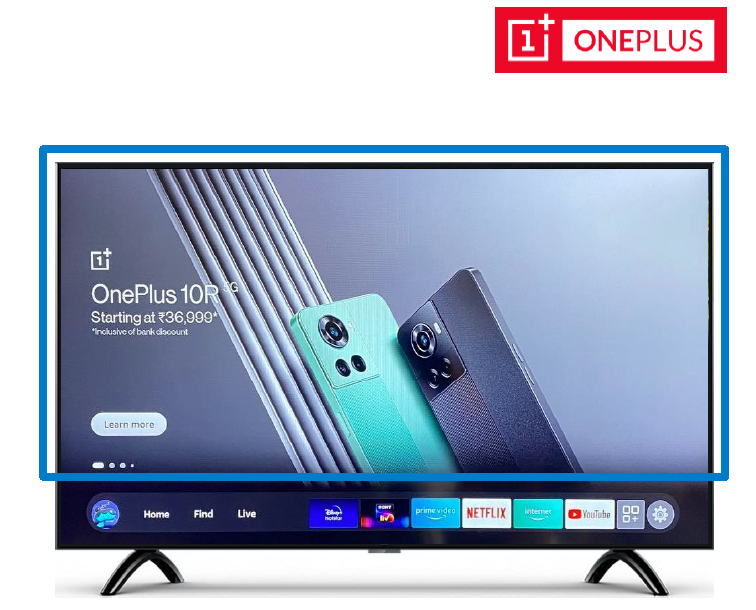
Or, they could find people using a smartphone within the 18-36 month after its purchase (the prime replacement timeframe). This would enable a target ad spend to reach potential new customers that fit a certain demographic profile. As the campaign progresses, they could fine tune further using more device specific criteria.
WURFL device capabilities are a well-accepted part for the digital ad industry. As video platforms expand their ad offerings, device detection information will also become an expected part of a complete ad suite.
Ad-Based Revenue Models and Device Detection Are Intertwined
AVOD and device detection sound like two totally different things, but they actually are both intertwined parts of a modern video advertising technology. Both are technologies that can be used to improve the user experience by delivering the right content to the right device. And when it comes to OTT advertising, targeted ads are more likely to result in conversions than generic ads. So if you’re looking for ways to increase your ad revenue, make sure you’re incorporating these two strategies into your plan!








